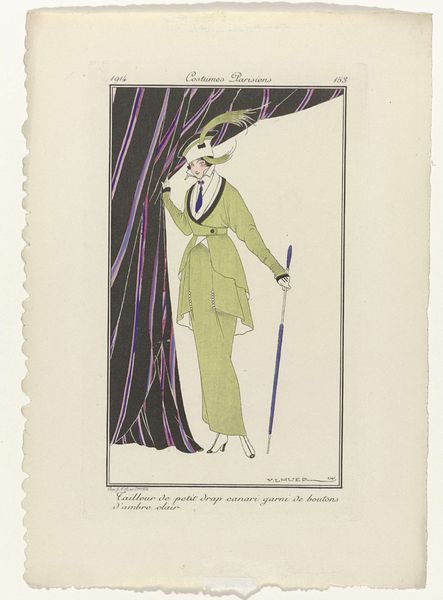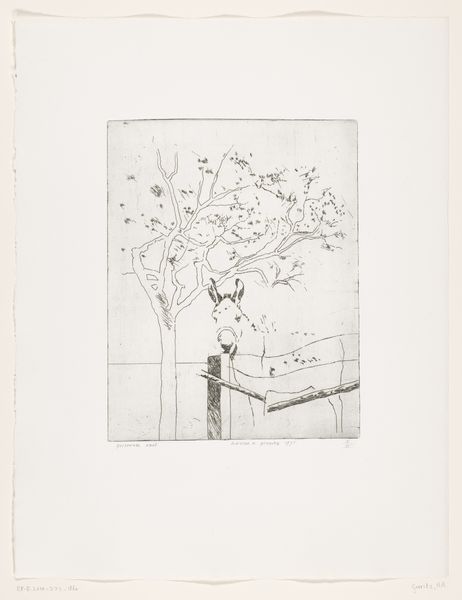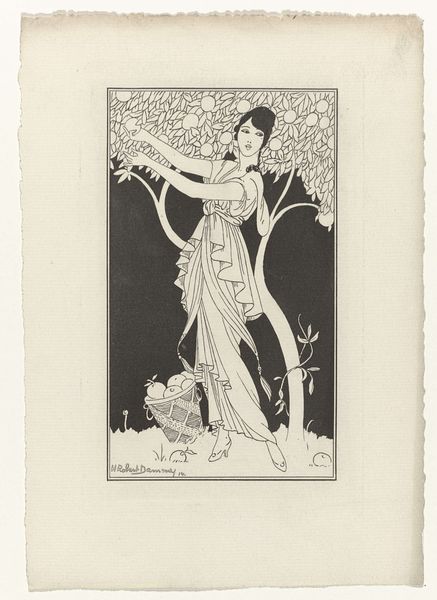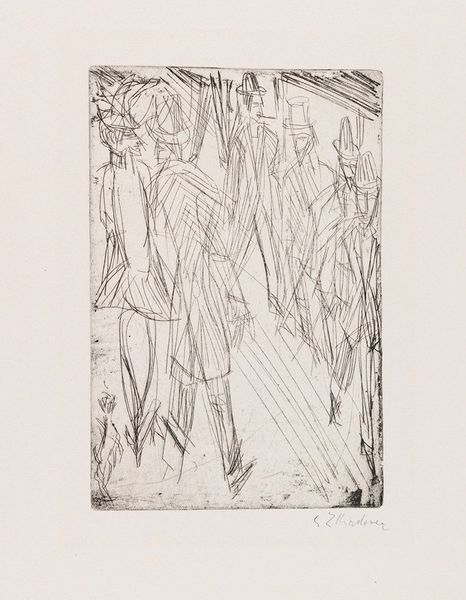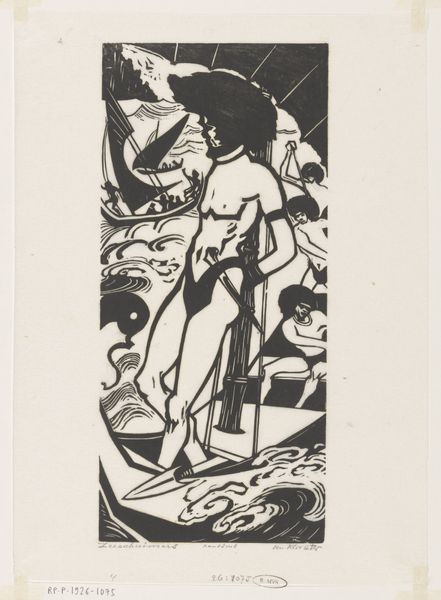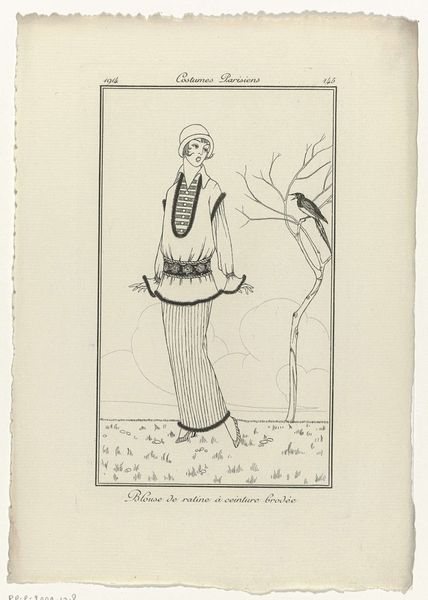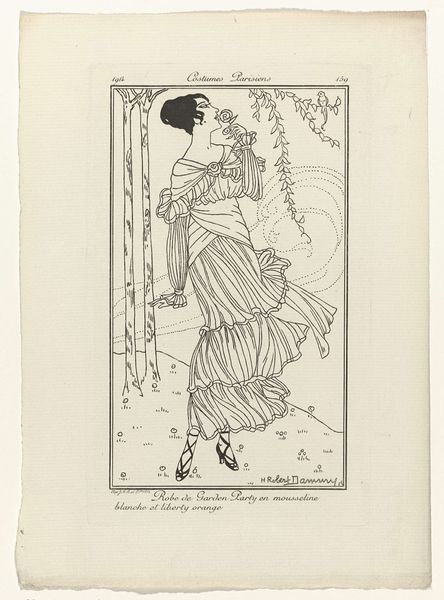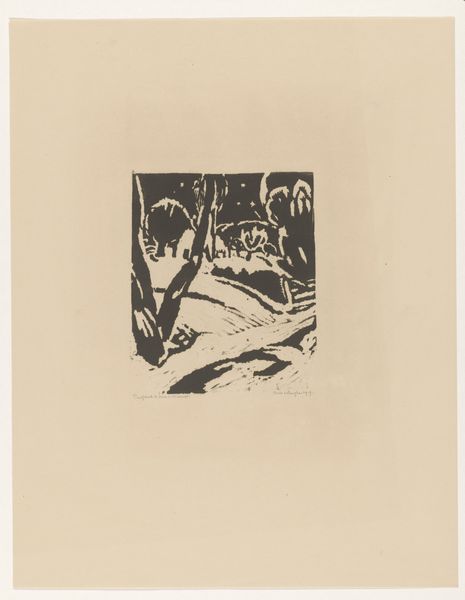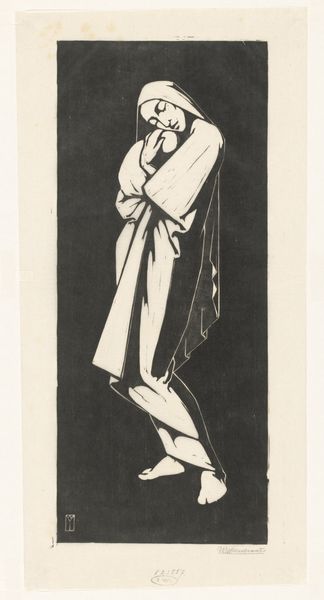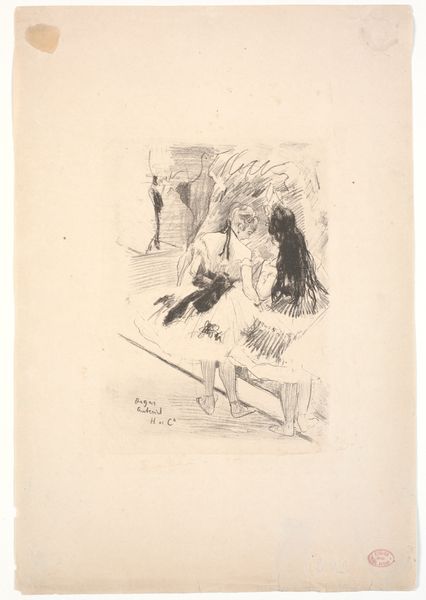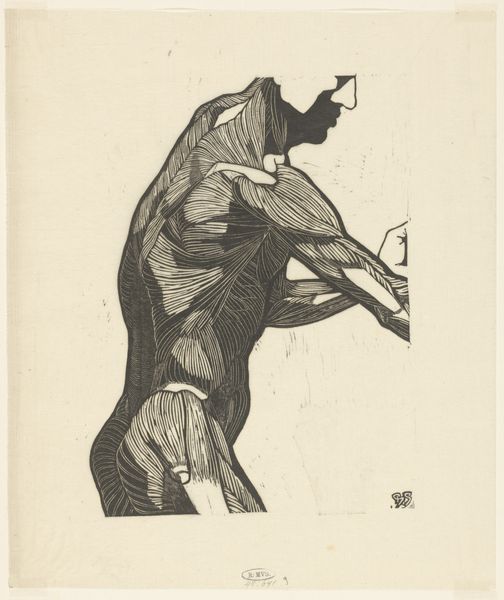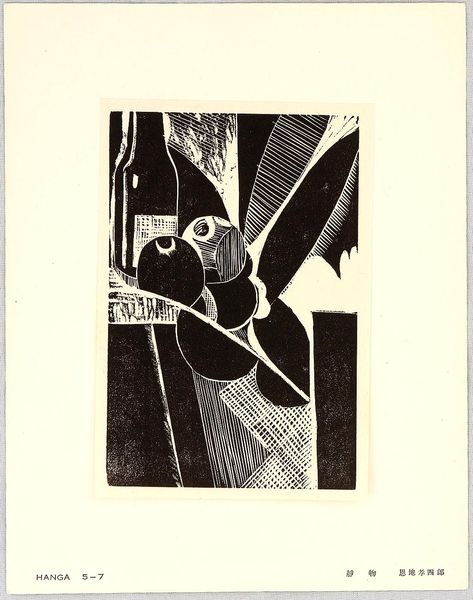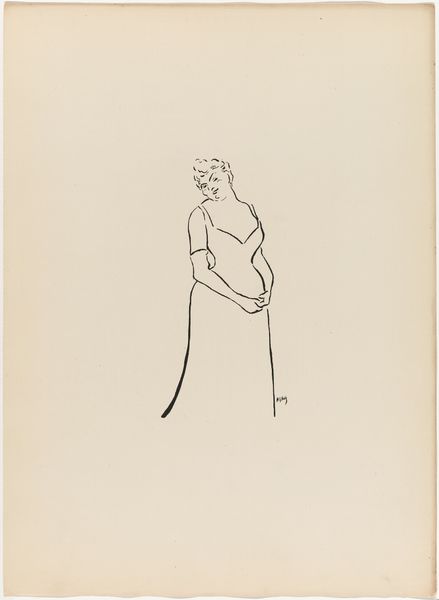
drawing, print, ink
#
portrait
#
drawing
#
art-nouveau
# print
#
ink
#
pen-ink sketch
#
watercolour illustration
#
decorative-art
Dimensions: height 178 mm, width 110 mm
Copyright: Rijks Museum: Open Domain
Curator: This illustration, "Journal des Dames et des Modes, Costumes Parisiens, 1914, No. 153" by Victor Lhuer, offers a striking example of fashion illustration just before the significant shifts the First World War would bring. Editor: My initial feeling is one of contained energy; it’s almost like a film still. The bold vertical lines contrast with the delicate silhouette, creating an intriguing sense of restrained movement and a bit of pre-war tension, would you agree? Curator: I do, and it is crucial to understand these fashion plates as more than simple representations of clothing. "Journal des Dames…" presents a very specific ideal of femininity tied to bourgeois aspirations, consumerism, and emerging female identities at a complex political moment. What narratives are at play here? What woman is imagined? Editor: I'd say this woman appears modern, but bound by tradition, just like the age this print stems from; note the tailored suit paired with a cane, but the bold curtain looks rather prison bar like, and almost dominates the figure entirely. The limited palette further emphasizes these binaries – bold versus muted, contained versus liberated. She's almost camouflaged. Curator: That's precisely what I mean; consider the rise of the fashion industry in the late 19th and early 20th centuries and the targeted messages aimed at women. The idealized, thin form and rather stiff poise reinforce certain class-bound performative expectations, doesn't it? Editor: Agreed, although the very fact of presenting fashion trends to a wider audience indicates some levelling of that traditional class structure. How accessible were magazines of this kind? Would you argue they fuelled aspirations of upward mobility among lower-middle-class women, even if those aspirations were partly illusory? Curator: Absolutely. Art and imagery always intersect with economic and social factors. Here, the fashion plate normalizes particular forms of visibility for women. Its bold visual statements are, perhaps, subtle political gestures that reflect back what role women could inhabit within that political climate, but also what the art world's expectations are of them at the time. Editor: Well put! Thank you, my understanding of this piece, as well as how to look at artwork like this is now greatly expanded.
Comments
No comments
Be the first to comment and join the conversation on the ultimate creative platform.
